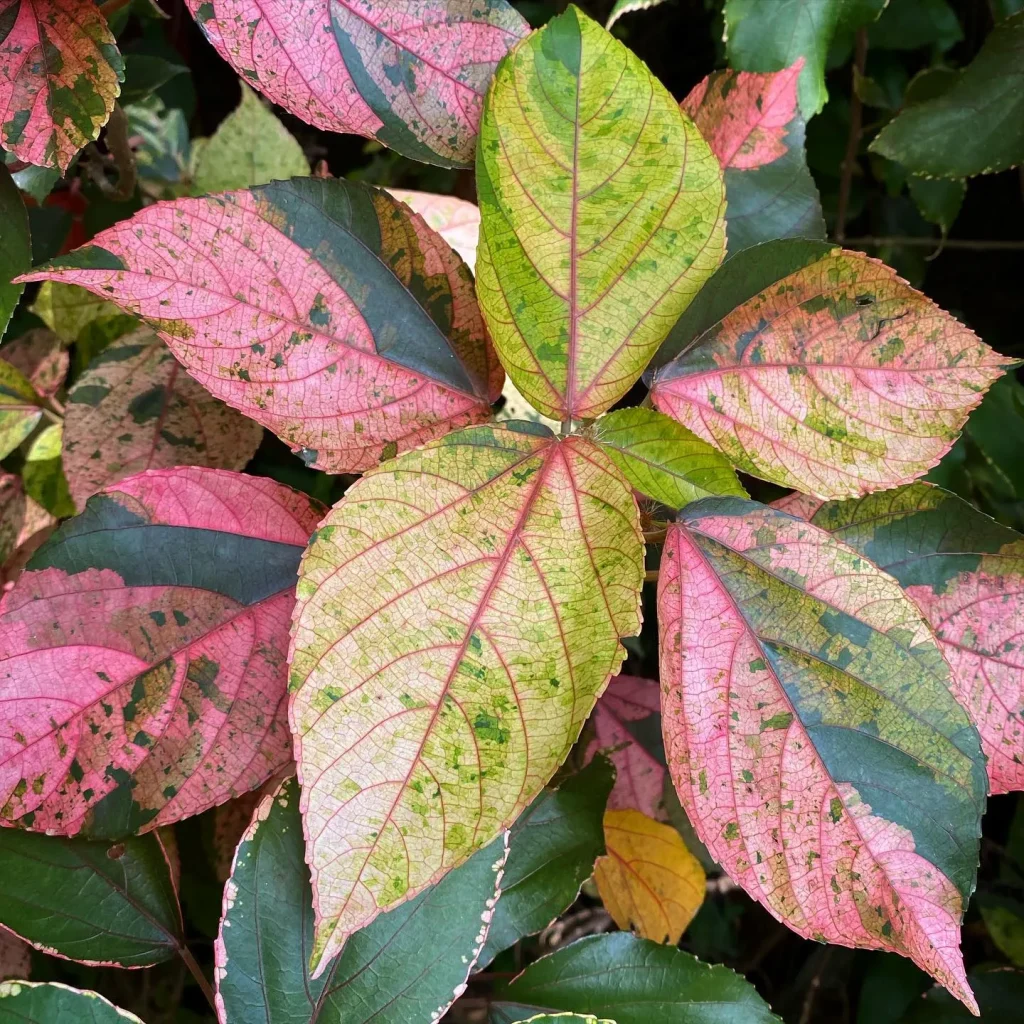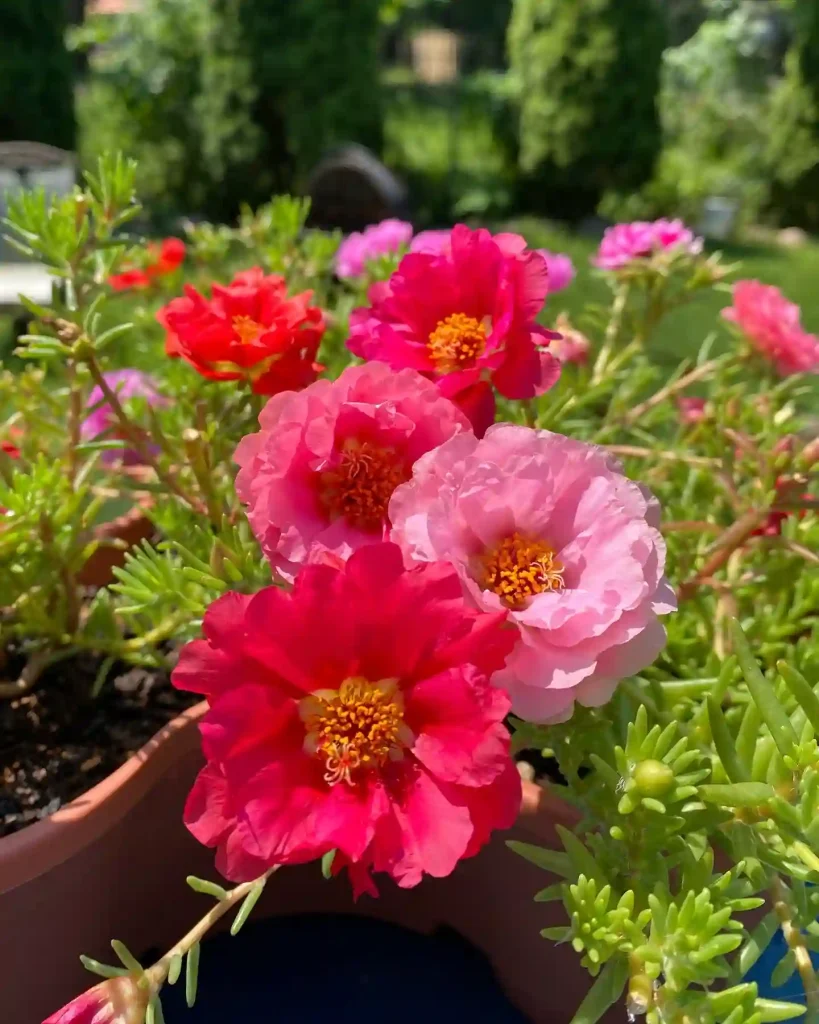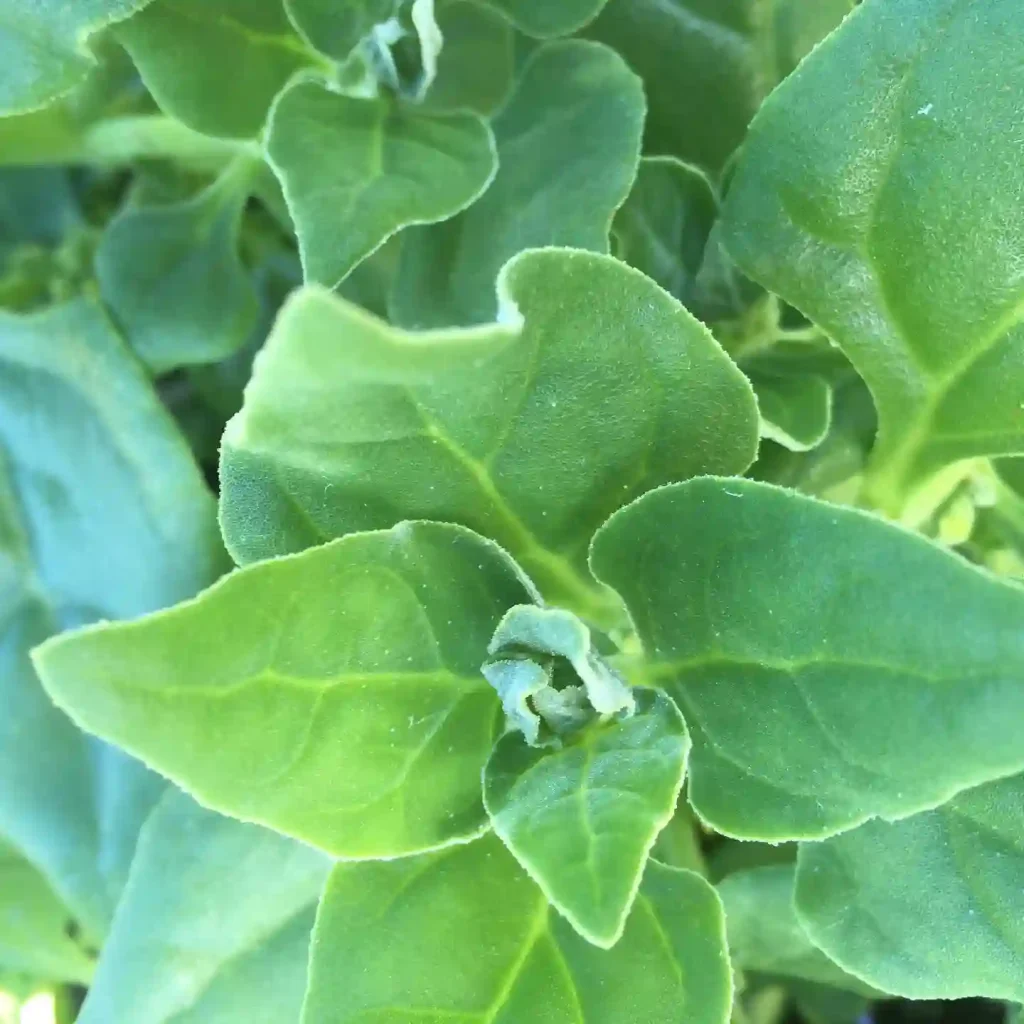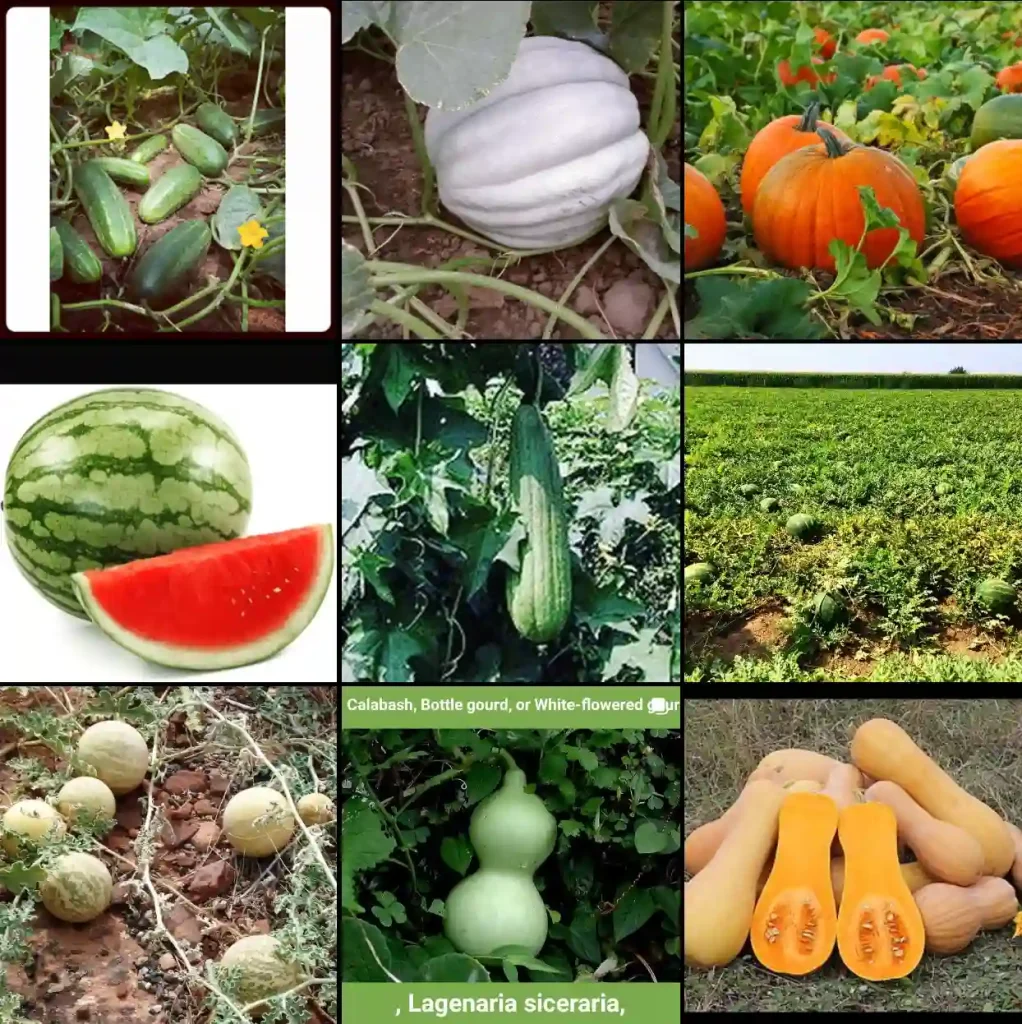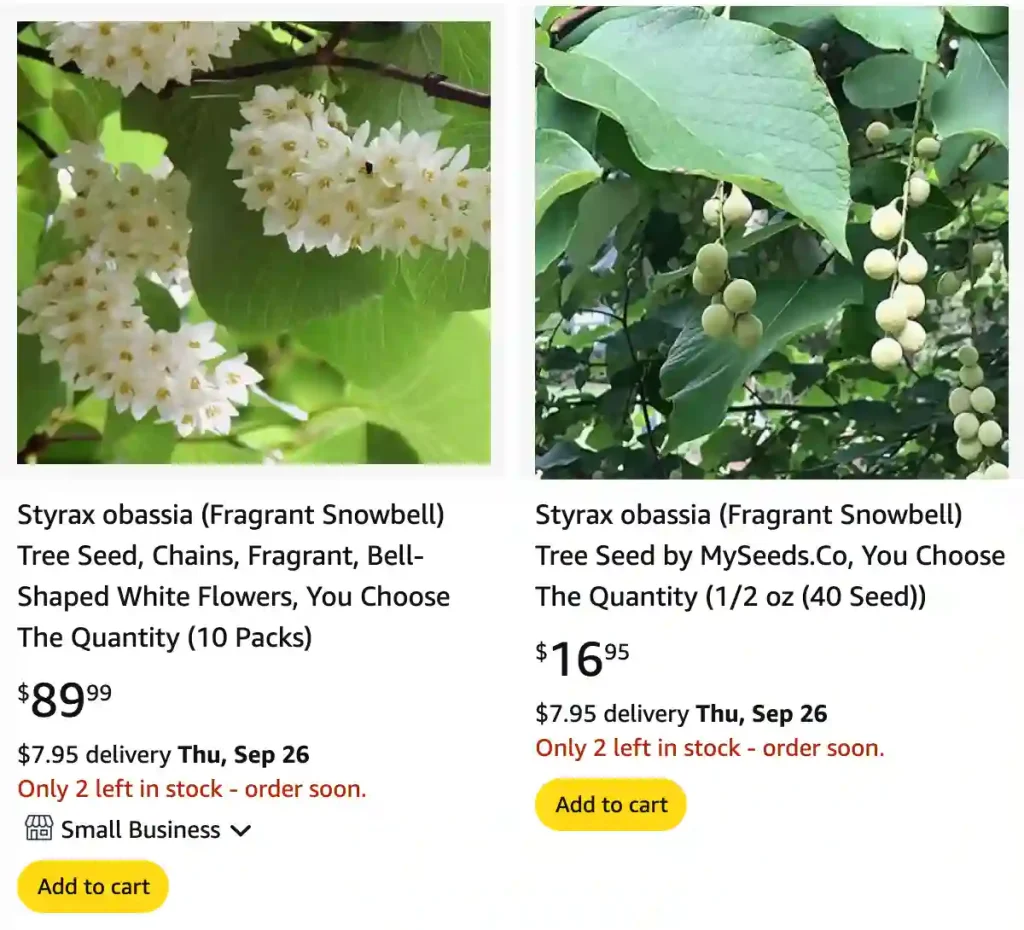
What is Styrax Obassia?
Styrax Obassia, also known as Fragrant Snowbell, is a beautiful, deciduous tree that originates from Japan and Korea. It typically grows up to 20-30 feet tall with an attractive rounded form. One of the defining features of Styrax Obassia is its large, oval leaves, which create a lush, almost tropical look. The tree produces clusters of small, fragrant white flowers in late spring, hanging gracefully like bells, adding a delicate beauty to the garden.
129 Species in Genus Styrax
Does Styrax Obassia Turn Color in Fall?
Yes, Styrax Obassia is known for its subtle yet beautiful fall color display. In the autumn, the leaves of the tree transform into a soft golden-yellow hue before they fall, creating a gentle contrast against the green leaves of surrounding trees. While it may not have the intense red or orange colors of some other trees, the fall display of Styrax Obassia adds a nice touch to any landscape.
Styrax Obassia vs Styrax Japonicus
Styrax Obassia and Styrax Japonicus, often called Japanese Snowbell, are two similar species, but they have some distinct differences. Styrax Japonicus tends to stay smaller, usually around 15-25 feet tall, and has smaller, more refined leaves compared to the larger, more robust foliage of Styrax Obassia. The flowers on both are quite similar, but Styrax Obassia produces larger, more fragrant blooms. In terms of growth habit, Styrax Obassia has a more upright form, whereas Styrax Japonicus has a slightly more spreading, layered appearance. If you’re looking for a tree with more presence and larger leaves, Styrax Obassia might be the better choice, while Styrax Japonicus works well in smaller spaces.
How to Care for Styrax Obassia?
Caring for Styrax Obassia is fairly straightforward. It thrives best in full sun to partial shade and prefers well-draining, slightly acidic soil. Regular watering, especially in the first few years after planting, helps the tree establish strong roots. While Styrax Obassia is relatively low-maintenance, providing a layer of mulch around the base helps retain moisture and keep the roots cool. It’s also a good idea to prune any dead or damaged branches in late winter or early spring before new growth begins.
How to Propagate Styrax Obassia?
Styrax Obassia can be propagated through seeds or softwood cuttings. To propagate via seeds, collect the seeds in late summer or early fall, then soak them in warm water for 24 hours before planting. Keep the seeds in a cold, moist environment for stratification during the winter, and plant them in spring. Softwood cuttings can be taken in early summer, dipped in rooting hormone, and placed in a moist growing medium. Keep the cuttings warm and humid until roots develop.
What to Plant with Styrax Obassia?
Styrax Obassia pairs well with other shade-loving plants like ferns, hostas, and hydrangeas. These plants complement the large, tropical-looking leaves of Styrax Obassia, while also thriving in similar growing conditions. It can also be planted near azaleas or rhododendrons, which share its love of slightly acidic soil. If you’re looking for a layered look in your garden, Styrax Obassia can be underplanted with lower-growing shrubs or ground covers like Pachysandra or Japanese Forest Grass.
Can You Grow Styrax Obassia Indoors?
Styrax Obassia is not typically grown indoors. Its size and need for full sun or partial shade make it better suited for outdoor landscapes. If you want to enjoy this tree’s fragrant blooms, it’s best to plant it in a garden or as part of a larger landscape.
Is Styrax Obassia Toxic?
Fortunately, Styrax Obassia is considered non-toxic to both humans and pets. This makes it an excellent choice for gardens where children or pets may play, as you won’t need to worry about harmful chemicals or poisonous parts.
Benefits of Planting Styrax Obassia
There are many benefits to planting Styrax Obassia in your landscape. First and foremost, its fragrant, bell-shaped flowers are a standout feature. It’s a relatively pest-resistant tree, and its modest size makes it suitable for residential gardens. Styrax Obassia also attracts pollinators like bees and butterflies, adding to the biodiversity of your garden. Additionally, its fall foliage adds a soft splash of yellow color to the landscape.
Common Problems with Styrax Obassia
Styrax Obassia is generally resistant to pests and diseases, but it can occasionally suffer from root rot if planted in poorly-draining soil. Overwatering can also lead to fungal issues. Aphids and caterpillars may nibble on the leaves, but they rarely cause significant damage. The best way to avoid problems is to plant Styrax Obassia in the right conditions – well-draining soil and adequate sunlight.
Compare Styrax Obassia with Other Similar Trees
Styrax Obassia is often compared to trees like Styrax Japonicus, as I mentioned earlier, but it also bears some resemblance to other small flowering trees like the American Fringe Tree (Chionanthus virginicus) and the Carolina Silverbell (Halesia tetraptera). The American Fringe Tree has similar white, fragrant flowers but has a slightly different leaf structure and fall color. The Carolina Silverbell also produces bell-shaped flowers, though its blooms tend to be smaller and less fragrant than Styrax Obassia.
Can Styrax Obassia Handle Cold Winters?
Styrax Obassia is hardy in USDA zones 5 to 8, making it suitable for regions with cold winters. However, it’s best to plant it in a sheltered location if you live in an area prone to harsh winter winds. In colder zones, you may need to provide some winter protection during the tree’s early years.
Is Styrax Obassia a Good Choice for Small Gardens?
Styrax Obassia can be a good fit for small gardens due to its moderate size, but its large leaves and spreading form can make it seem quite prominent in smaller spaces. If you have a small garden but want a tree with a lot of impact, Styrax Obassia is a great option. It’s manageable, easy to care for, and offers year-round interest with its flowers, foliage, and fall color.
If i die, water my plants!
